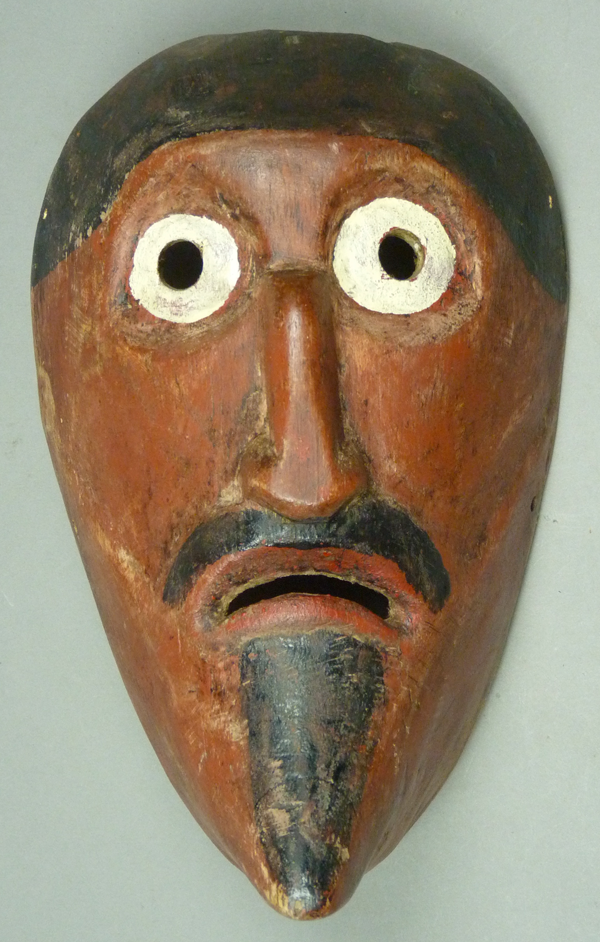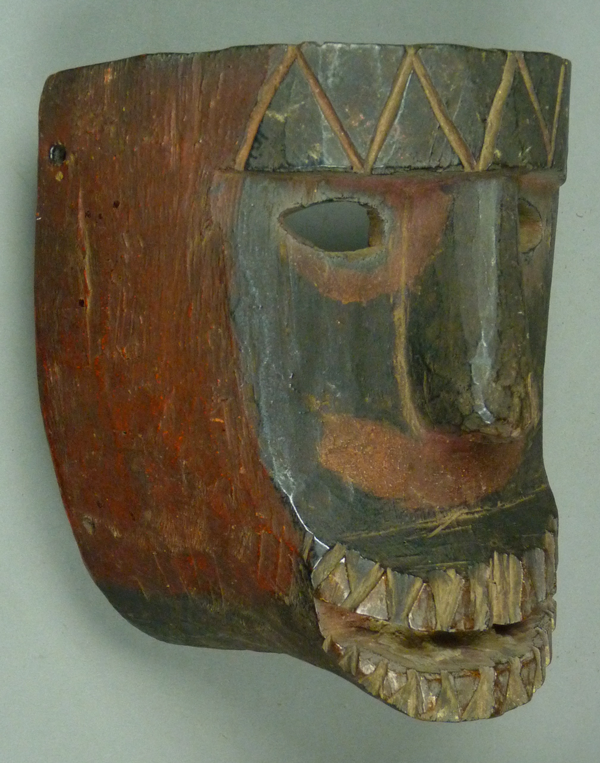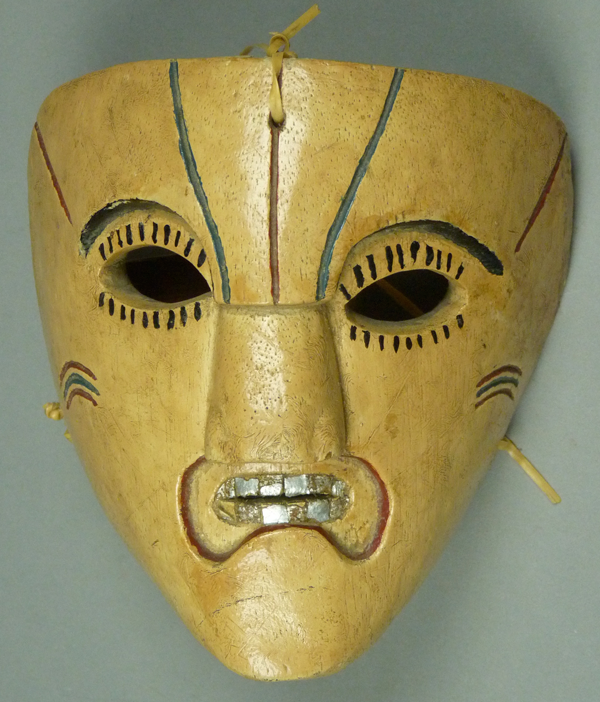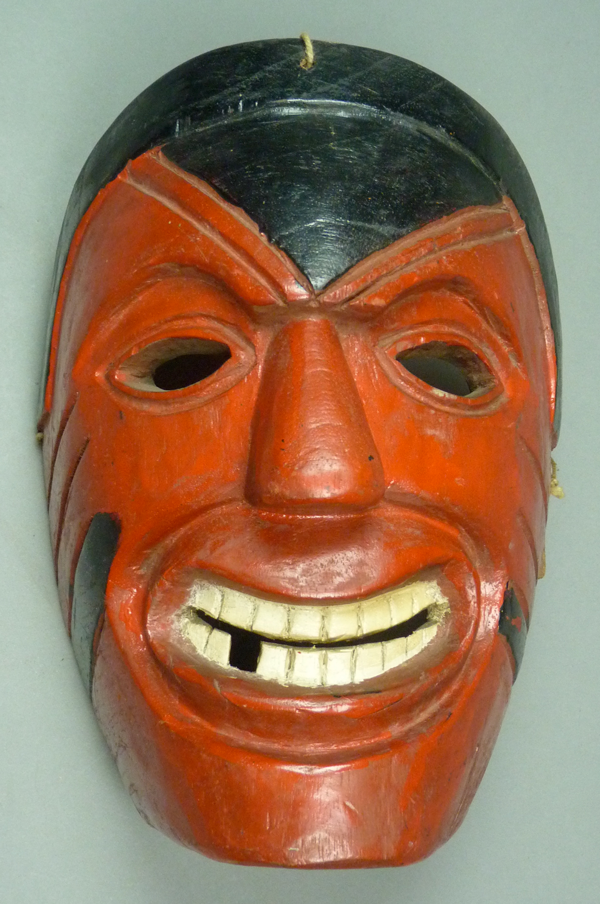This week we will examine Xantolo masks from Hidalgo and Veracruz that are painted red.
The first has a refined design. Were it painted another color, I might think that it was a mask from the Juanegros dance. I bought this mask from Jaled Muyaes and Estela Ogazón in 1999.
This is an attractive mask that is simply carved. Neither the hairline, the mustache, or the goatee are carved in relief; they are simply painted.





